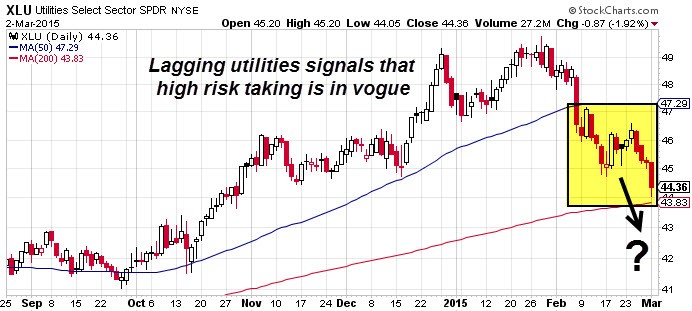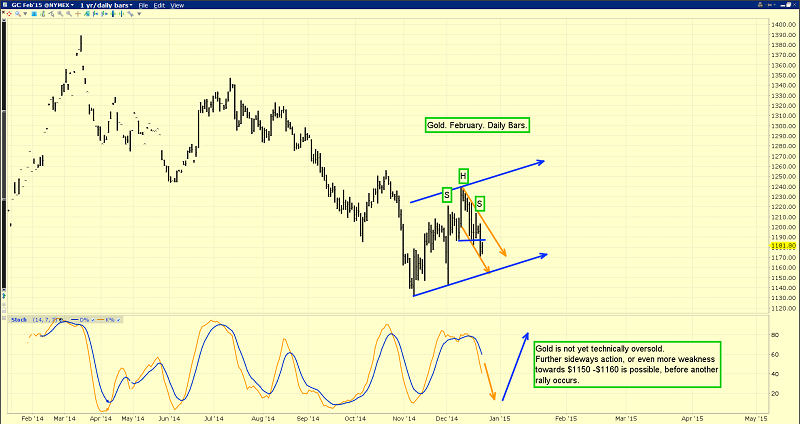How to Profit as a Conservative Aggressive Investor 2015
Post on: 1 Июнь, 2015 No Comment

Sid Riggs writes: Be conservative when investing aggressively.
That might sound like a contradiction but I guarantee it’s not.
It’s actually a key to why most professional traders outperform individual investors year after year.
Here’s what you need to know and, as always, how to profit.
Why Not to Worry About Being Right on All Your Trades
Most individual investors don’t want to cut losses because they’re pre-wired with an aversion to being wrong. As a result, they sit in losing trades far longer than they should letting small (manageable) losses turn into huge (catastrophic) losses.
It’s not surprising if you think about it. We’re all programmed from kindergarten to the end of our education career to be right.
You know the drill..
get good grades, get into a good college, get a good job, have a happy life.
On the other hand
get bad grades, don’t go to college, and you’ll be doomed to a life of sub-par jobs and a life full of struggle.
There are so many problems with that argument that I could write a book but that’s a conversation for another time.
Most professional traders, on the other hand, don’t have this problem. They don’t particularly care if they are right on every trade. It’s not uncommon for a professional trader to be wrong 75% to 85% (sometimes even more) of the time. In fact, I remember legendary trader Dennis Gartman explaining (at an Agora Wealth Symposium) that the more trades he was wrong on, the more money he made at the end of the year.
The Simple Math Behind a Rock-Solid Approach
This might sound counterintuitive to most people.
How do you make money over the long term when you’re wrong on 8 out of 10 trades?
It’s actually simple. Keep your losses small. Very small. And let your winners run. Basically, you’re being very conservative with your downside risk while being aggressive with your gains.
A little simple math will go a long way here.
If you have a $100k trading account and you limit your losses to just $1k of your overall capital you can be wrong 8 times in a row and you’ll only have lost $8k or just 8%.
Follow those eight losing trades with two $15k (or 15%) winners and you’re up 22% and you’re sitting on $122k. In this example you can be wrong 80% of the time and you’re still up 22% after 10 trades.
Professional traders refer to this as reward/risk trading because the potential reward far surpasses the risk. In fact, in this week’s Small Cap Rocket Alert we targeted a small cap opportunity using this very same strategy.
Just to be clear, I’m not suggesting you use 1% trailing stops on your position (although you could do that if that’s what fits your risk tolerance and trading style).
Instead, what I’m suggesting in the example above is that you limit your losses to $1k per trade. Obviously, that number would change depending on the size of your trading account.
For example, check out the following scenarios based on a hypothetical $100k portfolio.
If you establish a position worth $5k you could absorb a 20% loss on the position and still limit your loss to $1k. In this example your $5k position size represents 5% of your overall capital (of $100k) but the amount your willing to risk is only $1k or 1% of your capital.
Or maybe you establish a position worth $10k: you could absorb a 10% loss on the position and still limit your loss to $1k.
Or maybe, you establish a position worth $20k: you could absorb a 5% loss on the position and still limit your loss to $1K.
You can move those numbers around till the cows come home to get different variations but there’s one very important risk management consideration to remember. The larger your initial position size, the larger amount of initial risk you’re taking on in the event something happens in the pre-market, after-hours, or even in midday trading.
Applying This Strategy Will Lock In Profits and Limit Losses
So how do you use this in the real world?

It’s actually pretty simple.
Identify a trading opportunity you want to target.
It doesn’t matter what criteria you use: moving averages, MACD, support/resistance, voodoo bones, or tea leaves. The important factor is that the system you’re using to identify trades fits with your personality and trading style.
Once you’re in the trade do yourself two big favors
- Immediately enter your downside protective stop and your profit target orders. This will take a whole heckuva a lot of the emotion and guesswork out of the trade. If the trade starts to work in your favor you can always adjust the protective stop upward, to improve your profit potential.
- Divorce yourself from needing to be right on the trade. You may have done all the homework in the world only to find out the market had a different idea. And that’s totally okay. It doesn’t mean you made a mistake. It just means the market had other ideas at that point in time. Just make sure you keep your loss small so you can re-deploy your capital to the next opportunity to hit a home run.
Here are a few more common sense things to consider in order to be a more successful conservative aggressive investor.
Make sure you know your trade. What I mean by that is make sure you’ve done your homework to understand typical trading patterns in the stock you’re targeting. Don’t just establish a position willy-nilly because some blow-hard on television said it’s the next best thing since sliced bread.
Also, make sure you’re aware of when upcoming news announcements such as earnings are scheduled. The last thing you want is for your company to deliver bad earnings and get hammered in after-hours/pre-market trading. If that happens you could wake up to find your stock traded well below your stop before you get your fill.
Here’s another one: don’t establish a large initial position size in a stock that you are aware has a history of gapping up/down 10%, 15%, or more in after-hours or pre-market trading. Trust me (from experience) waking up one morning to find that your stock has gapped down 20%, 30% or more in the after-hours/pre-market is a crummy way to start the day.
Big overnight moves like these are not uncommon for small cap stocks even more so in small-cap biotech stocks.
In fact, in the last 14 months, readers of my Small Cap Rocket Alert newsletter experienced two single-day gains of 89.65% and 33.85% on a single small cap biotech stock.
The real key is to shift your focus to making money over the long-term rather than worrying about being right on every single trade .
You’ll know if you’re doing it right if you see your account balance increase over time.
Disclaimer. Nothing published by Money Morning should be considered personalized investment advice. Although our employees may answer your general customer service questions, they are not licensed under securities laws to address your particular investment situation. No communication by our employees to you should be deemed as personalized investent advice. We expressly forbid our writers from having a financial interest in any security recommended to our readers. All of our employees and agents must wait 24 hours after on-line publication, or after the mailing of printed-only publication prior to following an initial recommendation. Any investments recommended by Money Morning should be made only after consulting with your investment advisor and only after reviewing the prospectus or financial statements of the company.














